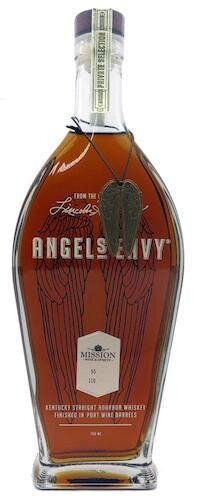As I was sitting in my living room last night, watching the Oscar night drama unfold onstage, I wasn’t thinking about how ridiculous Will Smith’s behavior was in that moment because I was too pre-occupied with the glass of Bordeaux in my hand.
My wife and I had friends over to watch the awards ceremony and I had popped a few bottles of wine to enjoy with the spread. We had a huge swath of snacks, charcuterie, cheeses, and other accoutrements, but I had whipped up a few New York steaks au poivre and my French friend Isabelle was going gaga for the pairing. “This wine is incredible!” she exclaimed, a complement coming from both a French native and a Gramercy Tavern alum; “What is it?”
I passed her the bottle. Nothing fancy. Just a 2012 Chapelle de Potensac, the second label from Haut-Médoc producer Château Potensac. I think I bought it for $15 some years back and it had been kicking around my cellar for a bit. As I’ve come to learn quite well over the years, you don’t have to spend a lot of money to drink great Bordeaux. You just have to be patient.
Even a sub-$20 bottle of claret can pay huge dividends if you give it time. The evolution of wine in the bottle is part of what makes the hobby so much fun. The liquid will continue to evolve little by little, every day tasting just a bit different than it would have tasted previously. It’s why buying just a single bottle of wine to age is such a risky endeavor. If you don’t have multiples to open over time and gauge where the wine is at, how will you know the right moment to open it?
That variability is part of the fun for serious wine lovers, and simultaneously part of the fear for whiskey drinkers. As I’ve come to learn over time, Scotch and Bourbon lovers don’t deal well with uncertainty. When they read a review online about a delicious new whiskey, they want the exact same tasting experience to be replicated in their glass. Whiskey is shelf stable, whereas wine is not; hence, there are no guarantees. Personally, I think it’s the main reason that more whiskey collectors don’t evolve into wine collectors. In a world that’s become increasingly black and white in terms of preference, there’s little tolerance for gray areas.
What’s interesting from my perspective, however, is how the value proposition between wine and whiskey has started to swing back the other way. About ten years ago, as Bordeaux prices started going though the roof and top Napa Cabernets became cult favorites, Bourbon and Scotch were still relatively undervalued given their quality and demand. The idea that one could spend $100 on a bottle of Pauillac and be forced to drink it by the end of the night stood in stark contrast to a $100 bottle of whiskey that could be consumed little by little over the course of many years.
Today, however, with the top Bourbons and single malts either unavailable or unaffordable for many drinkers, there are few surprises left to be discovered and consumers have started scaling back. The single barrel business has completely dried up, age statements have disappeared, and small upstarts often charge double or even triple what’s expected due to a lack of scale. Meanwhile, Bordeaux is moving in the other direction. Inventory is starting to pile up, back vintages are starting to open up again, and I’m finding value after value in the negotiant warehouses across the Atlantic. I think drinkers are ready to pivot over to a new adventure, and Bordeaux’s star is rising again at just the right moment.
Whereas I’m continuously recommending the same whiskey values today that I recommended five years ago, Bordeaux has become much more fluid. There’s only so many times I can recommend Buffalo Trace and Balvenie 12 before I run out of options that deliver for the dollar, but I’ve been able to find new Bordeaux values just about every week over the last few months. In just a few years, something like the 2016 Peyrabon for $19.99 will drink just as beautifully as the wine I drank last night for dinner. Give it ten years past the vintage and you’ll have a serious wine on your hands, or spend an extra five bucks and get the 2006 Peyrabon for $24.99 that already has more than a decade of maturity. By the time you come back for more, I’ll have an entirely new container of Bordeaux to show you, with new wines, new stories, and new discoveries.
There was a time when I would peruse lists of available barrels in both Scotland and Kentucky, getting excited about potential purchases like a kid mapping out his Christmas list. But with available inventory at an all-time low and prices at an all-time high, I’m having way more fun looking at the available Bordeaux inventory in warehouses along the Gironde. 2005 Barde-Haut, 2010 Kirwan, 2012 Leoville Barton, 2014 La Dame de Montrose: so many well-priced wines from great producers in solid vintages with bottle age! I’ve been placing orders right and left this past week, locking down cases of $20 bargain bottles to $500 unicorns.
We’re going to dig deeper into Bordeaux this week. There’s a lot to talk about.
-David Driscoll









